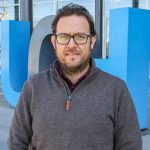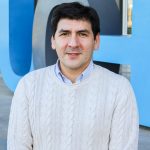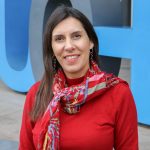Proyectos
- Julio 2024
En EjecuciónAgencia Nacional de Investigación y Desarrollo - ANID
Iconografías de la intolerancia: Imaginarios de odio en género y migración en Chile Contemporáneo
[vc_section el_class="container mx-auto align-items-center circle--pattern" css=".vc_custom_1648956589196{padding-top: 3rem !important;}"][vc_row el_class="pb-5"][vc_column][vc_wp_custommenu nav_menu="6"][uoh_breadcrumb_component automatic_breadcrumb="true"][uoh_title_component title_dropdown="big" title_decorator="true"]{{title}}[/uoh_title_component][vc_column_text css=""]El proyecto tiene por objetivo general: Analizar la transmisión de imágenes de odio en la esfera pública en el contexto nacional contemporáneo, en temas asociados a género y migración.
Como objetivos específicos, se propone:
OE1. Identificar tipologías de imágenes de odio que circulan en la opinión pública (medios de prensa y redes sociales) en temas asociados a género y migración. En este objetivo específico se indagará en diversas dimensiones: (1) características visuales; (2) composición: (3) elementos performativos -gesto, expresiones, posturas-.
OE2. Analizar cómo se transmiten los imaginarios de odio, en temas asociado a género y migración en medios de circulación masiva -medios de prensa y RRSS. Este objetivo busca estudiar los mensajes implícitos y explícitos que se transmiten por medio de las imágenes y cómo se relacionan entre ellos, ahondando en la efectividad
comunicativa que posee.
OE3. Propone un modelo metodológico para el estudio de imaginarios de odio en la esfera pública. El objetivo busca sistematizar algunas estrategias metodológicas apropiadas para el estudio de las imágenes, proponiendo un modelo de análisis, a la vez de reflexionar sobre los desafíos y limitaciones éticas de un análisis de esta índole en el contexto de las ciencias sociales.[/vc_column_text][/vc_column][/vc_row][/vc_section][vc_section css=".vc_custom_1649209804184{background-color: #f6faff !important;}" el_class="p-md-0 pt-md-5"][vc_row el_class="container mx-auto align-items-center p-md-0 pt-5"][vc_column el_class="p-0"][/vc_column][/vc_row][/vc_section][vc_section css=".vc_custom_1649210787516{background-color: #f6faff !important;}" el_class="p-md-0 pt-md-5 pb-md-5"][vc_row el_class="container mx-auto align-items-center"][vc_column][/vc_column][/vc_row][/vc_section]
Co-Investigador/a
- 24I10188
- Junio 2024 - Junio 2026
En EjecuciónAgencia Nacional de Investigación y Desarrollo - ANID
Herramienta molecular para el monitoreo de la sensibilidad farmacológica de productos antiparasitarios contra el piojo de mar en la industria salmonera
[vc_section el_class="container mx-auto align-items-center circle--pattern" css=".vc_custom_1648956589196{padding-top: 3rem !important;}"][vc_row el_class="pb-5"][vc_column][vc_wp_custommenu nav_menu="6"][uoh_breadcrumb_component automatic_breadcrumb="true"][uoh_title_component title_dropdown="big" title_decorator="true"]{{title}}[/uoh_title_component][vc_column_text css=""]Objetivo General
Desarrollar un kit de qPCR que permita evaluar con precisión la sensibilidad farmacológica de C.
rogercresseyi a tratamientos como inhibidores de quitina mediante asociación estadística entre
frecuencia de marcadores genómicos y eficacia de tratamientos en campo.
Objetivos Específicos
1. Validar estadísticamente la relación entre las variantes genómicas detectadas por el kit de
qPCR y la resistencia a tratamientos con inhibidores de quitina.
2. Establecer un protocolo de buenas prácticas de laboratorio para la correcta aplicación del
kit de qPCR.
3. Implementar capacitaciones para laboratorios y culminar con la certificación de aquellos
aptos para aplicar la técnica con eficacia.[/vc_column_text][/vc_column][/vc_row][/vc_section][vc_section css=".vc_custom_1649209804184{background-color: #f6faff !important;}" el_class="p-md-0 pt-md-5"][vc_row el_class="container mx-auto align-items-center p-md-0 pt-5"][vc_column el_class="p-0"][/vc_column][/vc_row][/vc_section][vc_section css=".vc_custom_1649210787516{background-color: #f6faff !important;}" el_class="p-md-0 pt-md-5 pb-md-5"][vc_row el_class="container mx-auto align-items-center"][vc_column][/vc_column][/vc_row][/vc_section]
Co-Investigador/a
- 40059116
- Junio 2024 - Diciembre 2023
En EjecuciónGobierno Regional - GORE
Transferencia: Estrategia fitosanitaria para la producción sostenible de olivares en la región de OHiggins.
En esta propuesta consideramos que la prospección y detección temprana de fitopatógenos
constituye una iniciativa altamente necesaria de abordar de una manera colaborativa e
integrada con los productores y otros integrantes del sistema olivícola. Lo anterior, debido a
que hay escaza información sobre los patógenos bacterianos y virales que atacan al cultivo
del olivo en Chile, como así también, de los insectos vectores que se asocian con la
diseminación de estos. Por otra parte, la información disponible a nivel nacional se condice
con acciones aisladas y reactivas, es decir, que una vez se presenta el problema se actúa en
consecuencia.
Realizar prospecciones colaborativas con actores del sistema productivo, periódicas y
preventivas serán significativas para aplicar medidas de gestión y/o manejo y cuarentena. En
el hecho, la bacteria Xylella fastidiosa (agente causal del síndrome de declive rápido del olivo;
OQDS), se encuentra ausente para el cultivo del olivo en Chile, no obstante, existe un alto
riesgo de ingreso y propagación de esta bacteria si no se realiza una vigilancia activa, en
particular, del material de propagación y en maquinaria agrícola que proviene de países
europeos donde el impacto de esta bacteria en olivos centenarios ha sido significativo, como
lo ocurrido en la región de Apulia (Italia).
Adquirir mayor información de como el cambio climático acelerado impacta en la incidencia de
enfermedades emergentes, y en fitopatogenos que se encuentran en estado de latencia en el
cultivo del olivo. En este aspecto, se desconoce el efecto en la distribución e impacto de
muchos fitopatógenos, lo que consideramos es de alto riesgo para la seguridad alimentaria y
sostenibilidad de la producción, en este caso de la olivicultura y oleicultura.
Proveer de información relevante para sostener una total y profunda vigilancia que permita al
SAG asegurar que la maquinaria agrícola que ingresa a territorio nacional, se encuentre exenta
de material vegetal contaminado de procedencia. Para labores de cosecha se ha optado por
el ingreso de maquinaria agrícola (regulado por normativas vigentes) proveniente de países
europeos (principalmente España) donde se ha reportado enfermedades asociadas a virus y
bacterias fitopatógenas de carácter cuarentenario para Chile; esta situación involucra un alto
riesgo para la sanidad de los olivos de la región y del país.
Contribuir en informar y educar a los productores, asesores técnicos e identidades públicas
que forman parte del sistema productivo olivícola de la región de OHiggins en tópicos de
fitosanidad del cultivo del olivo, entregará herramientas y mayor comprensión de los
fenómenos asociados a la salud del olivo en condiciones locales. Por otra parte, los desafíos
que deben resolver los productores en materia de fitosanidad pueden en algunas
oportunidades ser limitadas o deficientes por falta de información, y en consecuencia no
determinar la estrategia o táctica más apropiada para el control de enfermedades en plantas.
También, notamos del Diagnostico territorial participativo un gran interés por parte de los
productores en proteger la salud de sus olivos, a través de la detección temprana de problemas
fitosanitarios que eviten una contaminación masiva en olivos propios y vecinos.
Investigador/a Responsable
- 40059116
- Junio 2024
En EjecuciónGobierno Regional - GORE
Transferencia: Estrategia fitosanitaria para la producción sostenible de olivares en la región de OHiggins.
[vc_section el_class="container mx-auto align-items-center circle--pattern" css=".vc_custom_1648956589196{padding-top: 3rem !important;}"][vc_row el_class="pb-5"][vc_column][vc_wp_custommenu nav_menu="6"][uoh_breadcrumb_component automatic_breadcrumb="true"][uoh_title_component title_dropdown="big" title_decorator="true"]{{title}}[/uoh_title_component][vc_column_text css=""]En esta propuesta consideramos que la prospección y detección temprana de fitopatógenos
constituye una iniciativa altamente necesaria de abordar de una manera colaborativa e
integrada con los productores y otros integrantes del sistema olivícola. Lo anterior, debido a
que hay escaza información sobre los patógenos bacterianos y virales que atacan al cultivo
del olivo en Chile, como así también, de los insectos vectores que se asocian con la
diseminación de estos. Por otra parte, la información disponible a nivel nacional se condice
con acciones aisladas y reactivas, es decir, que una vez se presenta el problema se actúa en
consecuencia.
Realizar prospecciones colaborativas con actores del sistema productivo, periódicas y
preventivas serán significativas para aplicar medidas de gestión y/o manejo y cuarentena. En
el hecho, la bacteria Xylella fastidiosa (agente causal del síndrome de declive rápido del olivo;
OQDS), se encuentra ausente para el cultivo del olivo en Chile, no obstante, existe un alto
riesgo de ingreso y propagación de esta bacteria si no se realiza una vigilancia activa, en
particular, del material de propagación y en maquinaria agrícola que proviene de países
europeos donde el impacto de esta bacteria en olivos centenarios ha sido significativo, como
lo ocurrido en la región de Apulia (Italia).
Adquirir mayor información de como el cambio climático acelerado impacta en la incidencia de
enfermedades emergentes, y en fitopatogenos que se encuentran en estado de latencia en el
cultivo del olivo. En este aspecto, se desconoce el efecto en la distribución e impacto de
muchos fitopatógenos, lo que consideramos es de alto riesgo para la seguridad alimentaria y
sostenibilidad de la producción, en este caso de la olivicultura y oleicultura.
Proveer de información relevante para sostener una total y profunda vigilancia que permita al
SAG asegurar que la maquinaria agrícola que ingresa a territorio nacional, se encuentre exenta
de material vegetal contaminado de procedencia. Para labores de cosecha se ha optado por
el ingreso de maquinaria agrícola (regulado por normativas vigentes) proveniente de países
europeos (principalmente España) donde se ha reportado enfermedades asociadas a virus y
bacterias fitopatógenas de carácter cuarentenario para Chile; esta situación involucra un alto
riesgo para la sanidad de los olivos de la región y del país.
Contribuir en informar y educar a los productores, asesores técnicos e identidades públicas
que forman parte del sistema productivo olivícola de la región de OHiggins en tópicos de
fitosanidad del cultivo del olivo, entregará herramientas y mayor comprensión de los
fenómenos asociados a la salud del olivo en condiciones locales. Por otra parte, los desafíos
que deben resolver los productores en materia de fitosanidad pueden en algunas
oportunidades ser limitadas o deficientes por falta de información, y en consecuencia no
determinar la estrategia o táctica más apropiada para el control de enfermedades en plantas.
También, notamos del Diagnostico territorial participativo un gran interés por parte de los
productores en proteger la salud de sus olivos, a través de la detección temprana de problemas
fitosanitarios que eviten una contaminación masiva en olivos propios y vecinos.[/vc_column_text][/vc_column][/vc_row][/vc_section][vc_section css=".vc_custom_1649209804184{background-color: #f6faff !important;}" el_class="p-md-0 pt-md-5"][vc_row el_class="container mx-auto align-items-center p-md-0 pt-5"][vc_column el_class="p-0"][/vc_column][/vc_row][/vc_section][vc_section css=".vc_custom_1649210787516{background-color: #f6faff !important;}" el_class="p-md-0 pt-md-5 pb-md-5"][vc_row el_class="container mx-auto align-items-center"][vc_column][/vc_column][/vc_row][/vc_section]
Investigador/a Responsable
- FIC IDI 40059063-0
- Junio 2024 - Mayo 2027
AdjudicadoGobierno Regional - GORE
Transferencia Aumento de la Competitividad para los rubros hortícola y apícola de la Región de OHiggins mediante el Sello Reducción de Riesgos Alimentarios (RRA)
[vc_section el_class="container mx-auto align-items-center circle--pattern" css=".vc_custom_1648956589196{padding-top: 3rem !important;}"][vc_row el_class="pb-5"][vc_column][vc_wp_custommenu nav_menu="6"][uoh_breadcrumb_component automatic_breadcrumb="true"][uoh_title_component title_dropdown="big" title_decorator="true"]{{title}}[/uoh_title_component][vc_column_text css=""]Objetivos específicos:
Capacitar a los productores apícolas y hortícolas en cultura de inocuidad alimentaria y reglamento RRA en forma continua.
Certificar a través del sello RRA
Desarrollar una campaña de difusión y marketing regional del sello RRA.
Conformar el comité asesor público-privado regional de carácter permanente para asesorar y apoyar el funcionamiento continuo del sello RRA.[/vc_column_text][/vc_column][/vc_row][/vc_section][vc_section css=".vc_custom_1649209804184{background-color: #f6faff !important;}" el_class="p-md-0 pt-md-5"][vc_row el_class="container mx-auto align-items-center p-md-0 pt-5"][vc_column el_class="p-0"][/vc_column][/vc_row][/vc_section][vc_section css=".vc_custom_1649210787516{background-color: #f6faff !important;}" el_class="p-md-0 pt-md-5 pb-md-5"][vc_row el_class="container mx-auto align-items-center"][vc_column][/vc_column][/vc_row][/vc_section]
Investigador/a Responsable
- FIC 40059072-0
- Junio 2024 - Mayo 2027
AdjudicadoGobierno Regional - GORE
Transferencia de un Programa de extensión e innovación para la adaptación de la apicultura al cambio climático
[vc_section el_class="container mx-auto align-items-center circle--pattern" css=".vc_custom_1648956589196{padding-top: 3rem !important;}"][vc_row el_class="pb-5"][vc_column][vc_wp_custommenu nav_menu="6"][uoh_breadcrumb_component automatic_breadcrumb="true"][uoh_title_component title_dropdown="big" title_decorator="true"]{{title}}[/uoh_title_component][vc_column_text css=""]El objetivo de este proyecto es generar una estrategia de extensión e innovación, que permita la adaptación de la apicultura al cambio climático. Esta estrategia contempla 4 objetivos específicos que permitirán profesionalizar el rubro apícola de la región de OHiggins. El primer objetivo específico es entregar herramientas teóricas a los apicultores a través de cursos y talleres, tanto de manera online como presencial. El segundo objetivo específico es entregar herramientas prácticas, gracias a la implementación de Unidades de Mejoramiento Productivo Apícola, un Apiario Demostrativo y el Laboratorio de Apicultura. El tercer objetivo específico es desarrollar un análisis territorial que permita fortalecer el sistema de trazabilidad. Y el cuarto objetivo específico, es seguir fortaleciendo el capital social a través de actividades vinculación con entidades nacionales y/o internacionales.
El proyecto tiene como resultado final, formar apicultores y actores de la cadena apícola, capacitados para desarrollar las diferentes actividades necesarias en la producción apícola. Estas capacidades integradas al conocimiento de los apicultores, les permitirán realizar un manejo integral y resolver los problemas asociados al cambio climático que enfrenten en el diario desempeño de su profesión. Para ello se capacitarán en aspectos teóricos y prácticos. Se les entregarán competencias laborales de conocimiento, actitudes y habilidades para que puedan cumplir de forma exitosa con las actividades de la función apícola, permitiendo a los apicultores profesionalizarse.[/vc_column_text][/vc_column][/vc_row][/vc_section][vc_section css=".vc_custom_1649209804184{background-color: #f6faff !important;}" el_class="p-md-0 pt-md-5"][vc_row el_class="container mx-auto align-items-center p-md-0 pt-5"][vc_column el_class="p-0"][/vc_column][/vc_row][/vc_section][vc_section css=".vc_custom_1649210787516{background-color: #f6faff !important;}" el_class="p-md-0 pt-md-5 pb-md-5"][vc_row el_class="container mx-auto align-items-center"][vc_column][/vc_column][/vc_row][/vc_section]
Investigador/a Responsable
- IDI40059070-0
- Junio 2024 - Diciembre 2026
En EjecuciónGobierno Regional - GORE
Transferencia Tecnológica 4.0 para la gestión del riesgo en la cadena de valor de la cereza
[vc_section el_class="container mx-auto align-items-center circle--pattern" css=".vc_custom_1648956589196{padding-top: 3rem !important;}"][vc_row el_class="pb-5"][vc_column][vc_wp_custommenu nav_menu="6"][uoh_breadcrumb_component automatic_breadcrumb="true"][uoh_title_component title_dropdown="big" title_decorator="true"]{{title}}[/uoh_title_component][vc_column_text css=""]El proyecto tiene como objetivo generar un impacto positivo en la cadena de valor de las cerezas, abarcando tanto las actividades primarias de operación, labores agrícolas y estimaciones, así como las actividades de apoyo para el desarrollo de tecnologías. Se busca mejorar la toma de decisiones y la planificación de la producción al
proporcionar una herramienta para generar estimaciones de la producción basadas en los datos intraprediales, en contraposición a planificar únicamente con datos históricos, teniendo en cuenta la variabilidad climática en cada temporada. Esta herramienta tiene como enfoque aumentar la capacidad de planificación del manejo del cultivo, y así proporcionar información precisa a los asesores y servir de puente entre los productores y las exportadoras.[/vc_column_text][/vc_column][/vc_row][/vc_section][vc_section css=".vc_custom_1649209804184{background-color: #f6faff !important;}" el_class="p-md-0 pt-md-5"][vc_row el_class="container mx-auto align-items-center p-md-0 pt-5"][vc_column el_class="p-0"][/vc_column][/vc_row][/vc_section][vc_section css=".vc_custom_1649210787516{background-color: #f6faff !important;}" el_class="p-md-0 pt-md-5 pb-md-5"][vc_row el_class="container mx-auto align-items-center"][vc_column][/vc_column][/vc_row][/vc_section]
Investigador/a Responsable
- 40059116
- Junio 2024 - Junio 2024
En EjecuciónGobierno Regional - GORE
Transferencia: Estrategia fitosanitaria para la producción sostenible de olivares en la región de OHiggins.
En esta propuesta consideramos que la prospección y detección temprana de fitopatógenos
constituye una iniciativa altamente necesaria de abordar de una manera colaborativa e
integrada con los productores y otros integrantes del sistema olivícola. Lo anterior, debido a
que hay escaza información sobre los patógenos bacterianos y virales que atacan al cultivo
del olivo en Chile, como así también, de los insectos vectores que se asocian con la
diseminación de estos. Por otra parte, la información disponible a nivel nacional se condice
con acciones aisladas y reactivas, es decir, que una vez se presenta el problema se actúa en
consecuencia.
Realizar prospecciones colaborativas con actores del sistema productivo, periódicas y
preventivas serán significativas para aplicar medidas de gestión y/o manejo y cuarentena. En
el hecho, la bacteria Xylella fastidiosa (agente causal del síndrome de declive rápido del olivo;
OQDS), se encuentra ausente para el cultivo del olivo en Chile, no obstante, existe un alto
riesgo de ingreso y propagación de esta bacteria si no se realiza una vigilancia activa, en
particular, del material de propagación y en maquinaria agrícola que proviene de países
europeos donde el impacto de esta bacteria en olivos centenarios ha sido significativo, como
lo ocurrido en la región de Apulia (Italia).
Adquirir mayor información de como el cambio climático acelerado impacta en la incidencia de
enfermedades emergentes, y en fitopatogenos que se encuentran en estado de latencia en el
cultivo del olivo. En este aspecto, se desconoce el efecto en la distribución e impacto de
muchos fitopatógenos, lo que consideramos es de alto riesgo para la seguridad alimentaria y
sostenibilidad de la producción, en este caso de la olivicultura y oleicultura.
Proveer de información relevante para sostener una total y profunda vigilancia que permita al
SAG asegurar que la maquinaria agrícola que ingresa a territorio nacional, se encuentre exenta
de material vegetal contaminado de procedencia. Para labores de cosecha se ha optado por
el ingreso de maquinaria agrícola (regulado por normativas vigentes) proveniente de países
europeos (principalmente España) donde se ha reportado enfermedades asociadas a virus y
bacterias fitopatógenas de carácter cuarentenario para Chile; esta situación involucra un alto
riesgo para la sanidad de los olivos de la región y del país.
Contribuir en informar y educar a los productores, asesores técnicos e identidades públicas
que forman parte del sistema productivo olivícola de la región de OHiggins en tópicos de
fitosanidad del cultivo del olivo, entregará herramientas y mayor comprensión de los
fenómenos asociados a la salud del olivo en condiciones locales. Por otra parte, los desafíos
que deben resolver los productores en materia de fitosanidad pueden en algunas
oportunidades ser limitadas o deficientes por falta de información, y en consecuencia no
determinar la estrategia o táctica más apropiada para el control de enfermedades en plantas.
También, notamos del Diagnostico territorial participativo un gran interés por parte de los
productores en proteger la salud de sus olivos, a través de la detección temprana de problemas
fitosanitarios que eviten una contaminación masiva en olivos propios y vecinos.
Responsable Alterno
- 40059116
- Junio 2024 - Junio 2024
En EjecuciónGobierno Regional - GORE
Transferencia: Estrategia fitosanitaria para la producción sostenible de olivares en la región de OHiggins.
En esta propuesta consideramos que la prospección y detección temprana de fitopatógenos
constituye una iniciativa altamente necesaria de abordar de una manera colaborativa e
integrada con los productores y otros integrantes del sistema olivícola. Lo anterior, debido a
que hay escaza información sobre los patógenos bacterianos y virales que atacan al cultivo
del olivo en Chile, como así también, de los insectos vectores que se asocian con la
diseminación de estos. Por otra parte, la información disponible a nivel nacional se condice
con acciones aisladas y reactivas, es decir, que una vez se presenta el problema se actúa en
consecuencia.
Realizar prospecciones colaborativas con actores del sistema productivo, periódicas y
preventivas serán significativas para aplicar medidas de gestión y/o manejo y cuarentena. En
el hecho, la bacteria Xylella fastidiosa (agente causal del síndrome de declive rápido del olivo;
OQDS), se encuentra ausente para el cultivo del olivo en Chile, no obstante, existe un alto
riesgo de ingreso y propagación de esta bacteria si no se realiza una vigilancia activa, en
particular, del material de propagación y en maquinaria agrícola que proviene de países
europeos donde el impacto de esta bacteria en olivos centenarios ha sido significativo, como
lo ocurrido en la región de Apulia (Italia).
Adquirir mayor información de como el cambio climático acelerado impacta en la incidencia de
enfermedades emergentes, y en fitopatogenos que se encuentran en estado de latencia en el
cultivo del olivo. En este aspecto, se desconoce el efecto en la distribución e impacto de
muchos fitopatógenos, lo que consideramos es de alto riesgo para la seguridad alimentaria y
sostenibilidad de la producción, en este caso de la olivicultura y oleicultura.
Proveer de información relevante para sostener una total y profunda vigilancia que permita al
SAG asegurar que la maquinaria agrícola que ingresa a territorio nacional, se encuentre exenta
de material vegetal contaminado de procedencia. Para labores de cosecha se ha optado por
el ingreso de maquinaria agrícola (regulado por normativas vigentes) proveniente de países
europeos (principalmente España) donde se ha reportado enfermedades asociadas a virus y
bacterias fitopatógenas de carácter cuarentenario para Chile; esta situación involucra un alto
riesgo para la sanidad de los olivos de la región y del país.
Contribuir en informar y educar a los productores, asesores técnicos e identidades públicas
que forman parte del sistema productivo olivícola de la región de OHiggins en tópicos de
fitosanidad del cultivo del olivo, entregará herramientas y mayor comprensión de los
fenómenos asociados a la salud del olivo en condiciones locales. Por otra parte, los desafíos
que deben resolver los productores en materia de fitosanidad pueden en algunas
oportunidades ser limitadas o deficientes por falta de información, y en consecuencia no
determinar la estrategia o táctica más apropiada para el control de enfermedades en plantas.
También, notamos del Diagnostico territorial participativo un gran interés por parte de los
productores en proteger la salud de sus olivos, a través de la detección temprana de problemas
fitosanitarios que eviten una contaminación masiva en olivos propios y vecinos.
Responsable Alterno
- Junio 2024 - Diciembre 2024
AdjudicadoUniversidad de O'Higgins
Integración de Patentes en Metodología Activa: Desarrollo y Evaluación en un Curso de Ingeniería Mecánica
[vc_section el_class="container mx-auto align-items-center circle--pattern" css=".vc_custom_1648956589196{padding-top: 3rem !important;}"][vc_row el_class="pb-5"][vc_column][vc_wp_custommenu nav_menu="6"][uoh_breadcrumb_component automatic_breadcrumb="true"][uoh_title_component title_dropdown="big" title_decorator="true"]{{title}}[/uoh_title_component][vc_column_text css=""]Integración de Patentes en Metodología Activa: Desarrollo y Evaluación en un Curso de Ingeniería Mecánica. Supported by the Fondo I Convocatoria de Innovación en Docencia, UOH.[/vc_column_text][/vc_column][/vc_row][/vc_section][vc_section css=".vc_custom_1649209804184{background-color: #f6faff !important;}" el_class="p-md-0 pt-md-5"][vc_row el_class="container mx-auto align-items-center p-md-0 pt-5"][vc_column el_class="p-0"][/vc_column][/vc_row][/vc_section][vc_section css=".vc_custom_1649210787516{background-color: #f6faff !important;}" el_class="p-md-0 pt-md-5 pb-md-5"][vc_row el_class="container mx-auto align-items-center"][vc_column][/vc_column][/vc_row][/vc_section]
Investigador/a Responsable





